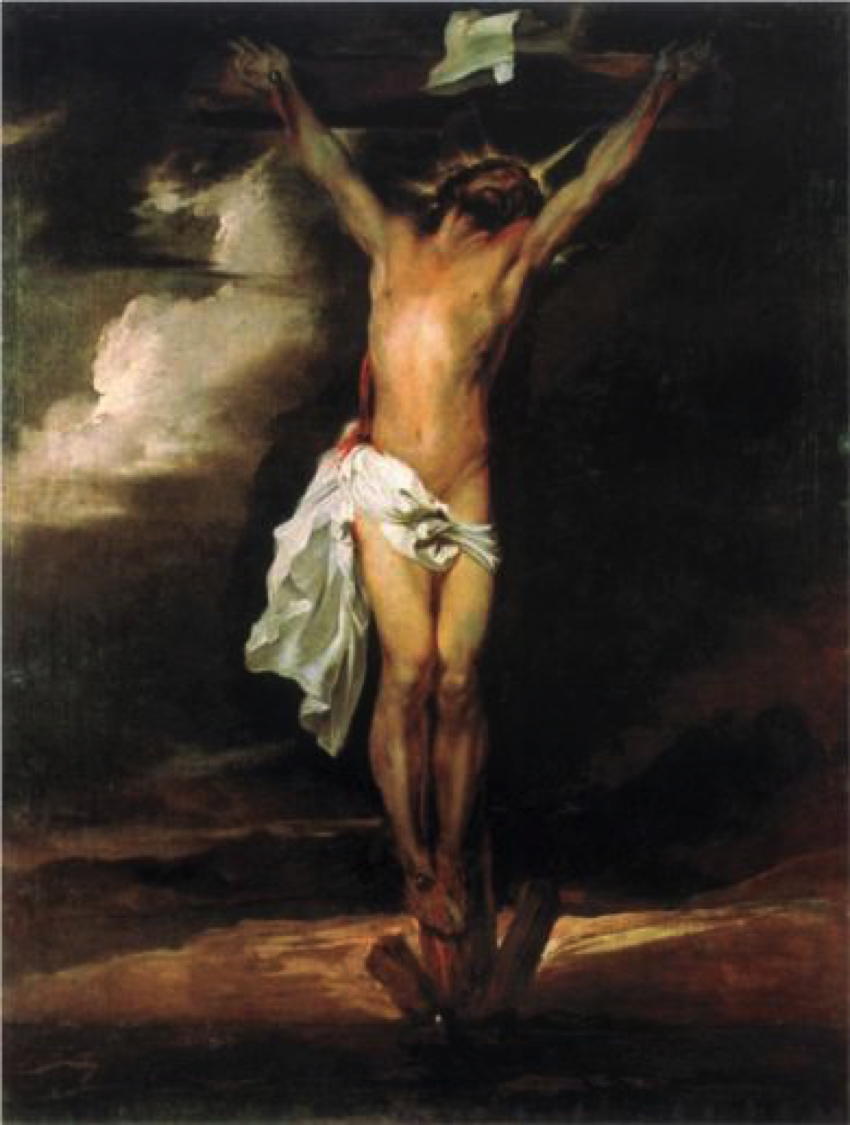REVIEW
• We have presented “five arguments” for the existence of God that rely entirely on logic and science for their justification.
• From that, we gave you “five reasons” to believe in God.
• We’ve answered objections from atheism regarding suffering in the world, God’s origin, God’s hiddenness, and why Christianity makes an exclusive claim that Jesus is the only means to obtain eternal life.
• We’ve discussed general revelation that utilizes the “witness of creation” and “witness of conscience”
SPECIAL REVELATION
In our last blog, we said that the term “revelation” can be understood in its broad sense as a “communication from God” or its narrow sense as the “disclosure of something previously unknown.”
Now we want to talk about what theologians call “special revelation.” This is revelation about God that is not generally available to all people who were ever born. It is more than a basic understanding. With this, we start to focus on specific aspects about God that are not readily apparent to the average person.
There are three different kinds of what theologians call “special revelation”:
• The revelation of Jesus Christ
• Scripture
• Particular revelation to individuals
The most important of these is the revelation of Jesus Christ. This includes the understanding that Jesus of Nazareth was more than a good man or wise teacher: He was the Son of God. How do we know this? Well, there is reliable historical evidence for the resurrection of Jesus from the dead.
Most scholars agree that Jesus was crucified and died on the cross. However, there are some religions who deny that Jesus even died. For example, Islam’s Koran says that it was made to appear that Jesus was crucified and died, but the Koran denies that Jesus actually was crucified, died, resurrected or redeemed man from sin. Is that true? Let’s look at the evidence.
JESUS’ RESURRECTION
First, no other religious leader died, was buried and arose from death in the well-documented manner that Christ did. It is the single miraculous event that sets Jesus apart from all other religious leaders.

THE ORAL TRADITION
Jesus died about 33 A.D.
Oral tradition is how most important events and teachings were handed down through generations in the Jewish culture of first-century Palestine. Historians consider the record of an event to be more accurate if it originated closer to the time of the event. If the record was more than two generations from the actual event, there was time for possible legendary embellishment to have occurred, and the narrative could potentially be less accurate.
1 Corinthians 15 is part of a letter written by the apostle Paul to Christian believers in Corinth, Greece. In 1 Corinthians 15:3-6 (KJV), Paul conveys an oral tradition that was given to him within two years of Jesus’ death:
“For I delivered unto you first of all that which I also received, how that Christ died for our sins according to the scriptures; And that he was buried, and that he rose again the third day according to the scriptures; And that he was seen of Cephas, then of the twelve. After that, he was seen of above five hundred brethren at once; of whom the greater part remain unto this present, but some are fallen asleep.”
This oral tradition about the death, burial and resurrection of Jesus was:
• a tradition closest to the event of Jesus’ death,
• the oldest know teaching of the entire New Testament,
• a fact that left no opportunity for legendary embellishment to be added with so many eyewitnesses still alive to talk about it.
TIMING OF THE ORAL TRADITION THAT WAS GIVEN TO PAUL AS A NEW CONVERT
German New Testament scholar Gerd Ludemann said, “the elements in the tradition are to be dated to the first two years after the crucifixion of Jesus . . . not later than three years: . . . the formation of the appearance tradition mentioned in 1 Cor. 15:3-8 falls into the time between 30 and 33 C.E.”
Paul is relaying information that was given to him as a new convert. Paul was converted on the road to Damascus probably in 33 A.D. He didn’t just go off to Arabia and stay there for three years. He said he returned to Damascus and preached the gospel there (Galatians 1:18).
It’s likely that Paul knew this tradition already, but scholars say he surely HAD to know it. In 36 A.D., we know that he went back to Jerusalem and spent two weeks with Peter and James. Certainly, by that time if not earlier he would have received this oral tradition. So 36 A.D. is the latest possible time he could have received it.

WHY A “BODILY” RESURRECTION?
The Jewish people believed that when the body died, the soul went to be with God until the general resurrection of the righteous at the end of the world. At that general resurrection, it was believed that the physical remains of the dead would be raised, the body put back together, and the soul would be reunited with the body. So the personal identity of every individual soul would remain intact until the end of the world.
Without exception, all Jews would view the bones of Jesus as the key element here. When a Jew said someone died, that meant that his bones were buried in the ground. So if a Jew communicated that there was a resurrection, that would necessarily have to be a “bodily” resurrection. The bones would have to rise.
WHAT DO THE MAJORITY OF BIBLE SCHOLARS THINK IS TRUE?
Surveys indicate that the majority of Bible scholars think the following are true:
• Jesus actually died on the cross (did not just pass out for example)
• Jesus was buried in Joseph of Arimathea’s tomb,
• A group of his women followers found that same tomb empty three days later (on the first day of the week),
• There were post-mortem appearances of Christ to several different groups of people,
• There was no existing tradition in the Jewish culture of that day about an individual being resurrected that would explain this narrative.
In this blog we want to (1) establish the facts that can serve as historical evidence, and (2) examine whether or not Jesus’ resurrection is the best explanation of those facts. This will require that we investigate the historical reliability of specific events and assess the theories that have been created to explain the resurrection of Jesus.

JESUS’ DEATH AND BURIAL
Crucifixion
John Dominic Crossan, co-founder of the Jesus Seminar, states, “That he was crucified is as sure as anything historical can ever be.” John Dominic Crossan, Jesus: A Revolutionary Biography (San Francisco: HarperOne, 2009), 163.
Death
Christ died . . .he was buried . .
1 Corinthians 15:3-4
And though they found no cause of death in him, yet desired they Pilate that he should be slain.
Acts 13:28
And Jesus cried with a loud voice, and gave up the ghost.
Mark 15:37

Burial
. . . they took him down from the tree, and laid him in a sepulchre.
Acts 13:29
And he [Joseph of Arimathea] bought fine linen, and took him down, and wrapped him in the linen, and laid him in a sepulchre . . .
Mark 15:46
With regard to Jesus’ death and burial, there isn’t much controversy on that subject among contemporary theologians. Theories claiming he fainted, swooned, was drugged or fell into a coma have each lost credibility over the years. There are too many independent and extremely early sources to deny his death and burial.
Theologian Bart Ehrman says, “the earliest accounts we have are unanimous in saying that Jesus was in fact buried by this fellow, Joseph of Arimathea, and so it’s relatively reliable that that’s what happened. We also have solid traditions to indicate that women found this tomb empty three days later.” Bart D. Ehrman, Jesus: Apocalyptic Prophet of the New Millennium (Oxford: Oxford University Press, 1999), 231 and Bart D. Ehrman, “From Jesus to Constantine: A History of Early Christianity,” Lecture 4: “Oral and Written Traditions about Jesus” (The Teaching Company, 2003).
In writing his account of the resurrection, Mark used eyewitness source material that German New Testament scholar Rudolph Pesch tells us originated within seven years of Jesus’ crucifixion.
We already mentioned that, based on an oral tradition that originated within two years of the crucifixion, Paul in 1 Corinthians 15:3-5 mentions that Jesus died and was buried.
In Acts 13:28-31, Luke records a sermon in which Paul recalls Jesus’ death and burial in a tomb. Matthew and Luke’s gospels used Mark’s writing as one source, but they also used independent sources other than Mark to convey the resurrection narrative.
John is another independent source who recounted the resurrection of Jesus. Paul Barnett tells us:
“Careful comparison of the texts of Mark and John indicate that neither of these gospels is dependent on the other. Yet they have a number of incidents in common: for example . . . the burial of Jesus in the tomb of Joseph of Arimathea.” Paul Barnett, Jesus and the Logic of History, New Studies in Biblical Theology (Grand Rapids, MI: Eerdmans, 1997), 104-105.
In a survey of over 2,200 publications on the resurrection that were written in English, French, and German since 1975, it was found that 75 percent of scholars think the discovery of Jesus’ empty tomb was a historical fact.
Even Jewish scholars of renown such as Pinchas Lapide and Geza Vermes have been convinced that the tomb was found to be empty.
So there are multiple sources that attest to the fact that Jesus died and was buried in Joseph of Arimathea’s tomb.
ALTERNATIVE THEORIES REGARDING THE EMPTY TOMB
Conspiracy Theory
In first-century Palestine, Jewish leaders told everyone that the disciples stole Jesus’ body and lied about resurrection appearances. This was revived by Deists in the 1700s. However, there are no modern scholars who will defend this view today.
Apparent Death Theory
In the early 1800s, critics like Heinrich Paulus and Friedrich Schleiermacher said that Jesus was not completely dead when he was taken down from the cross and that he revived in the tomb and escaped from the tomb to convince his disciples he had risen from the dead. In light of the entire body of evidence, this theory is indefensible and it has been abandoned by everyone. There are no scholars who will defend this theory today.
Wrong Tomb Theory
In 1907, Kirsopp Lake suggested that the women who arrived at the cemetery that Sunday morning came upon a caretaker at an unoccupied tomb in the garden. He said, “You’re looking for Jesus of Nazareth. He is not here.” The women were unnerved and fled. This theory was still-born. No one joined Lake in promoting his idea.
Every explanation that attempts to explain the empty tomb by natural means has been abandoned or has very few adherents today.
CONCLUSION
We have many different sources, each one of them independent, that all attest to the fact that Jesus actually died and was buried in Joseph of Arimathea’s tomb.
FURTHER READING
This evidence about Jesus’ death and burial was obtained from Dr. William Lane Craig in his book Reasonable Faith.
For further insight on the resurrection, read N.T Wright’s exhaustive study entitled The Resurrection of the Son of God.

